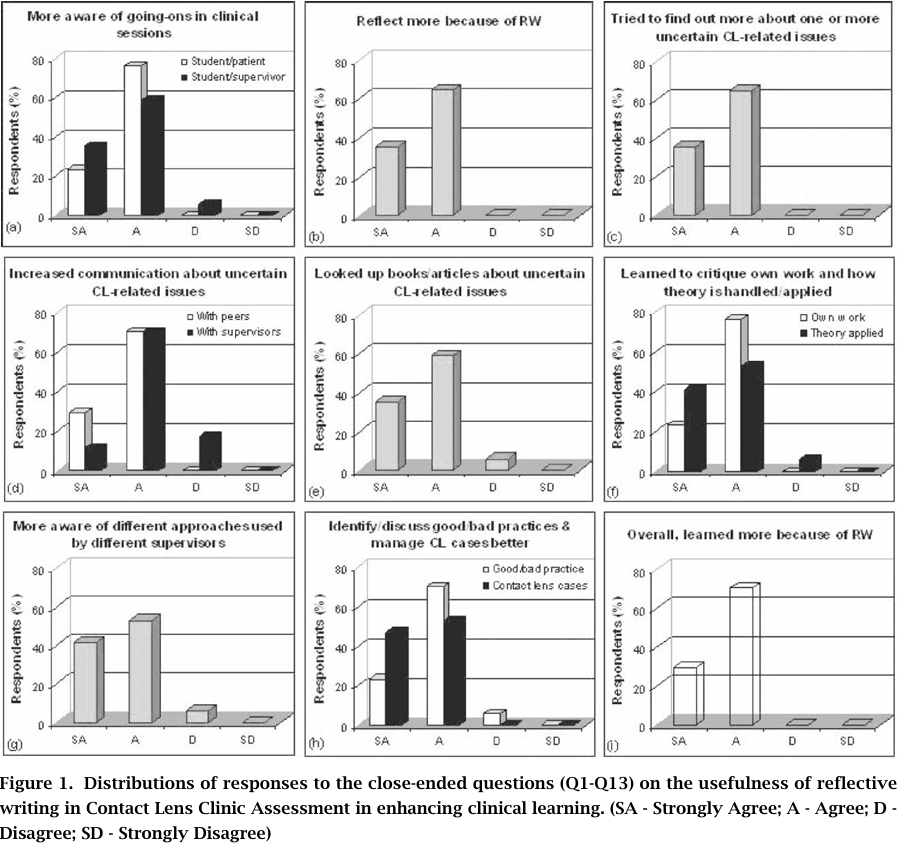
Close-ended questions (Q1-13)
 المؤلف:
Pauline Cho & Catherine Tang
المؤلف:
Pauline Cho & Catherine Tang
 المصدر:
Enhancing Teaching and Learning through Assessment
المصدر:
Enhancing Teaching and Learning through Assessment
 الجزء والصفحة:
P354-C30
الجزء والصفحة:
P354-C30
 2025-08-05
2025-08-05
 432
432
Close-ended questions (Q1-13)
Figures 1(a) - (i) show the distribution of responses to the close-ended questions.
All the students either strongly agreed or agreed that the RW exercise (one reflective journal (RJ) and one reflective diary (RD)) had made them more aware and alert of what was going on between them and their patients in a clinical session. All students, except one (S13), (94%) strongly agreed or agreed that RW made them more aware of and alert to what were going on between them and their supervisors during a clinical session (see Figure 1a). All reported that the RW exercise helped them to reflect quite a lot on their contact lens cases or related issues (Figure 1b), and also prompted them to try to find out more about one or more uncertain CL-related issue (Figure 1c).

All the students strongly agreed or agreed that they communicated more with their peers but only three students (S3, S5, S7) (18%) disagreed that they were also communicating more frequently with their supervisors to discuss contact lens related issues (Figure 1d). Of the 17 students, only one student (S17) (6%) disagreed that s/he looked up books/ articles about uncertain CL-related issues as a result of having to do this RW exercise (Figure 1e)
All students also strongly agreed or agreed that they learned to critique their own work. Only one student (S7) (6%) disagreed that RW helped her to learn to critique how theory was applied in real practice (Figure 1f) and to identify and discuss good or bad practices (Figure 1h).
Another student (S5) disagreed that s/he became more aware that different practitioners may take different approaches in a similar case (Figure 1g). All students agreed that from the RW exercise, they learned how to manage CL cases better. Overall, all students strongly agreed (29%) or agreed (71%) that because of the RW exercise, they had learned more about CL practice.
 الاكثر قراءة في Teaching Strategies
الاكثر قراءة في Teaching Strategies
 اخر الاخبار
اخر الاخبار
اخبار العتبة العباسية المقدسة


